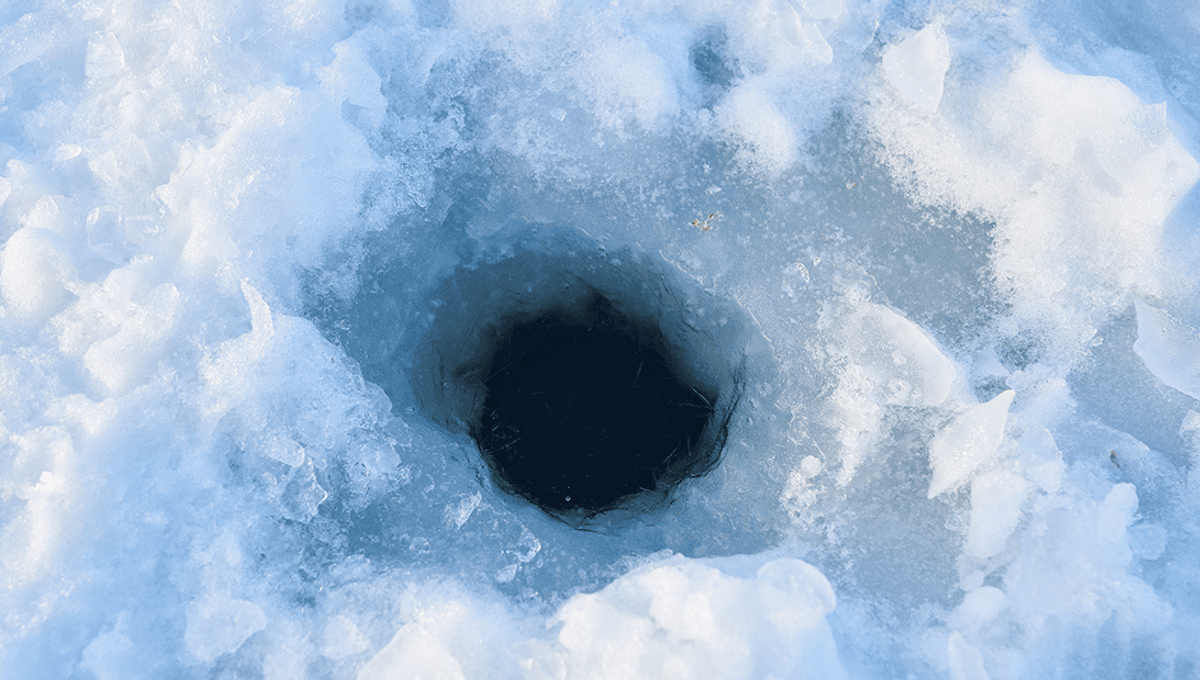
Ice cores are a pretty good way to get an idea of the Earth’s atmosphere in the ancient past, thanks to their ability to trap gas and other debris within them.
“Like a prehistoric fly trapped in amber during dinosaurs’ days, airborne relics of Earth’s earlier climate—including dust, air bubbles, sea salts, volcanic ash, and soot from forest fires—can end up trapped in glacial ice for eons,” the National Oceanic and Atmospheric Administration (NOAA) explains. “To climate scientists, those relics tell a story about how our planet’s climate and atmosphere have changed over thousands of years.”
Not only can analyzing bubbles of air trapped within ice tell us about the planet’s past, it could also give us hints as to how the planet’s climate may evolve in the future, hence why scientists regularly try and find the oldest ice possible to study.
Until fairly recently, the oldest ice recovered from the thickest part of Antarctic ice sheets was around 800,000 years old. While undeniably old, that’s not quite old enough for what climate scientists would like to study.
“The lack of ice older than ∼ 1 Ma [1 million years old] severely limits our direct paleoclimate record and creates uncertainties when modeling future climate predictions which include modeled configuration of the past Antarctica Ice Sheet,” a 2022 paper examining a far older core explains.
“This is particularly important during the Pliocene epoch, in which global surface temperatures and CO2 levels were higher than present and which is considered analog for current anthropogenic warming.”
The authors behind that study attempted to find such old ice, taking a “debris-rich ice core” measuring 944 centimeters (372 inches) in length from the Ong Valley, located in the Transantarctic Mountains, containing ice believed to be even older than eastern Antarctica’s ice sheets.
The team then analyzed the ice’s age using cosmogenic nuclide dating techniques.
“Cosmogenic nuclides are produced at low rates (several to hundreds of atoms per gram per year) by the interaction of cosmic rays with elements both in the atmosphere and in surficial materials, including in rock and soil,” the US Geological Survey explains. “Measuring nuclide concentrations requires elemental separation from source geologic material followed by counting of atoms using sensitive accelerator mass spectrometers. Because nuclide production rates have been quantified, the measured concentration of these nuclides can be interpreted as a near-surface residence time.”
Sampling the core, they found that they had hit the jackpot. The ice core sample contained two distinct layers, with the top layer dating to around 2.95 million years old. Beneath this layer, the team found the ice dated back to between 4.3 and 5.1 million years old.
“The ages reported here coincide with the Pliocene epoch (5.3–2.6 Ma),” the authors write in their paper. “Although the dated age range is rather wide due to complexities resulting from old age and exposure–burial dating, it is still direct evidence of an [East Antarctic Ice Sheet] expansion and local ice expansion during that time. This dated age suggests that the ice sheet expansion predated the MIS M2 cooling event and possibly coincided with the early Pliocene global glaciation (ca. 4.9–4.8 Ma). If in fact the older ice is still present below the Middle ice mass, then it did not melt during a period of warming.”
While more research and more samples are needed to draw further conclusions, the team believed they had found evidence of the timing of the Pliocene’s two glacial advances.
“Collectively our results show that the continental ice sheet advanced into Ong Valley repeatedly, and evidence of at least two such advances at 2.95 and 4.3–5.1 Ma is still preserved in lateral moraines, drifts, and stacked ice masses,” the team concludes. “Since 2.95 Ma the only evidence of ice advance or stagnation in the Ong Valley was ∼ 10 kyr ago.”
Source Link: 5-Million-Year-Old Antarctic Ice Core Contains Sample Of Air From The Pliocene Epoch